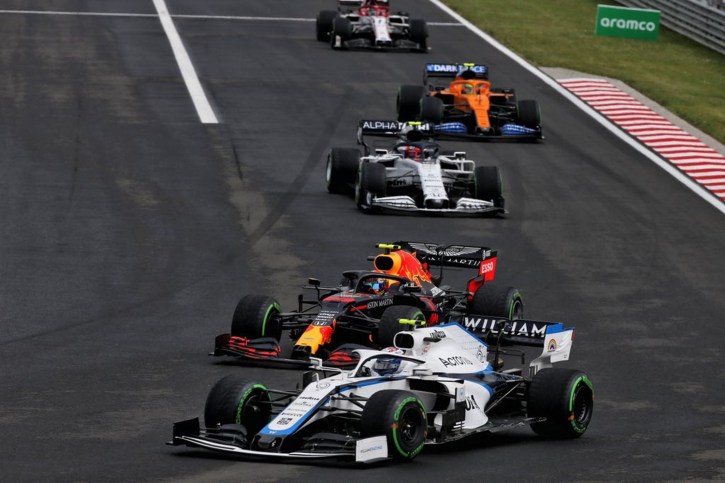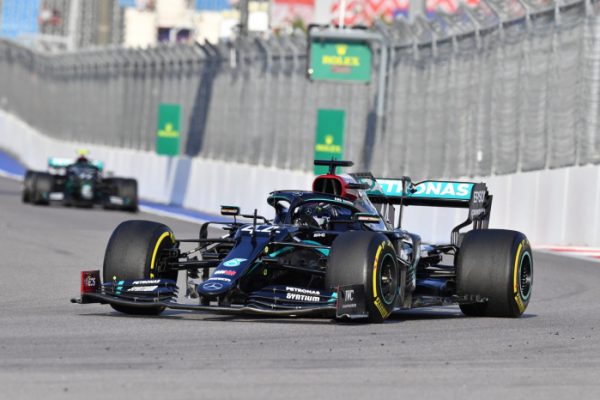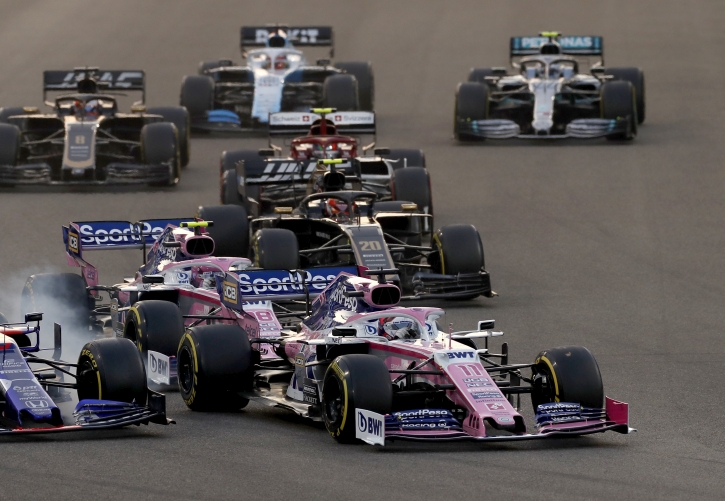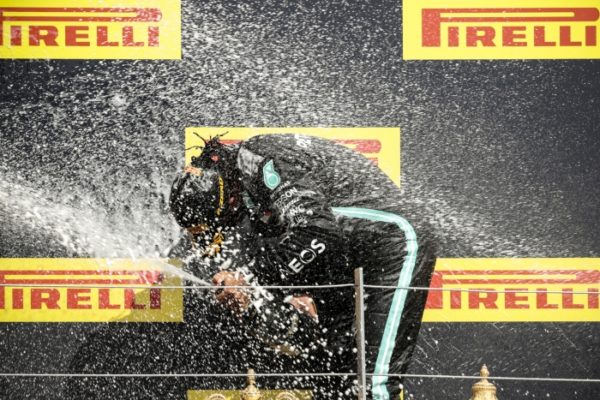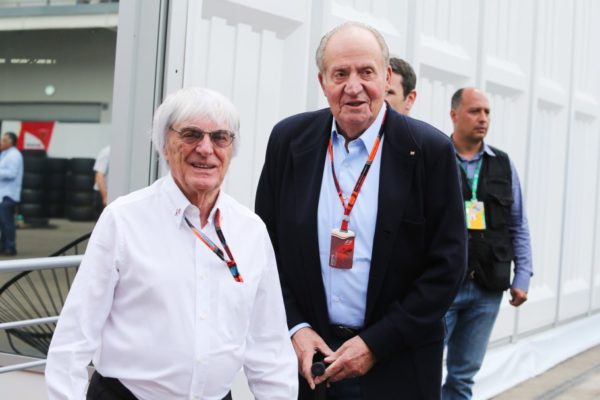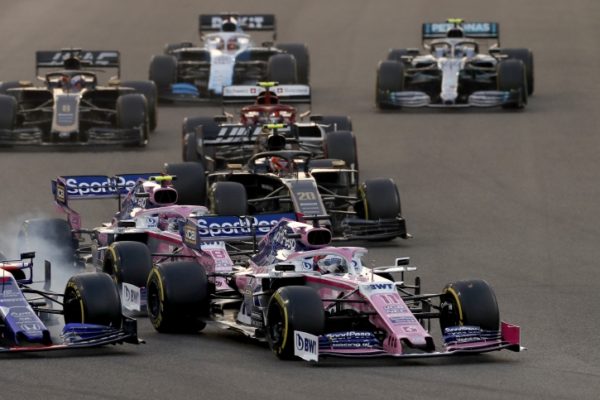How well do you know your Formula 1? Hint: One of the below statements is not true – see if you can identify which one.
The “MP4” designation in the McLaren car’s naming convention (such as the latest car, which is called the MP4/21), originated in 1981 and stands for “Marlboro Project Four” – the designation continued despite Marlboro being replaced by West as title sponsor in 1997.
Between 1992 and 2004, the cars of only two designers won all the Drivers’ and Constructors’ World Championships – the designers being Adrian Newey and Rory Byrne. This run was broken only in 2005 when Rory Byrne was no longer actively involved in the design of the Ferrari and Adrian Newey’s McLaren – widely believed to be the fastest car on the grid in 2005, was disadvantaged by unreliable engines (see also The Newey Factor: Red Bull to podium?)
Mike Gascoyne, the current Technical Chief at Toyota, designed the 1999 Jordan that strongly challenged for the Drivers’ World Championship in the hands of a resurgent Heinz-Harald Frentzen. Frentzen ended third in the championship – Jordan’s most successful year. Gascoyne was head-hunted by Renault shortly thereafter, while Frentzen has recently retired from DTM.
Sergio Rinland was the designer of the most successful Sauber to date – the 2001 season during which his cars took 4th place in the Constructors’ World Championship. The strange fact is that he was sacked that very season. Reports were that that he left by “mutual consent” but in actual fact he was sacked before the first race.
Louise Goodman, ITV’s reporter who covers the action in the pit area during races, started her career in Formula 1 as the Jordan team’s Public Relations Officer.
Sylvester Stallone’s movie “Driven” was originally to be centered on Formula 1. After initial research, however, the producers found that Formula 1’s intricate politics were tough to break and the players in Formula 1 were not keen on letting in outsiders and the theme switched to Champ cars.
The number of cylinders in a Formula 1 engine was not regulated before 2003. Prior to that only the cubic capacity of the engines were regulated. The introduction of this rule, stating that all engines were to be in the V10 format, delayed Toyota’s entry into Formula 1 by a year, as their initial engine was a V12.
During practice for the 1995 Australian Grand Prix Mika Hakkinen suffered serious injuries and doctors went on to predict that he would never race again. He returned in 1996 and took the Drivers’ world championship twice – in 1998 and 1999.
The engine block used by Renault to win both the Drivers’ and Constructors’ World Championships in 2005 was the same 72 degree V engine block that carried Benetton – effectively the same team – to both Championships ten years earlier in 1995. Renault’s radical 111 degree engine block offered many advantages but vibration was a problem and the engine had to be down tuned to last a race distance. The problems were being overcome but the 2004 one engine per weekend rule saw the 111 degree engine block scrapped once and for all as it was believed impossible to make it last a whole weekend. The easiest thing for Renault to do was bring back the 72 degree block, eventually winning the championship against a field of teams all running 90 degree blocks. Renault’s V8 entry for the 2006 season is a 90 degree V.
Since Stewart Ford, Sir Jackie’s Stewart’s privately owned team, was bought by Ford and named Jaguar Racing (subsequently bought by Red Bull), they have not been able to match their best season result (4th in the Constructors World Championship) again – despite the additional budget.
Adrian Newey, designer of seven championship winning cars for Williams and McLaren, was fired from an ailing Leyton House Formula 1 team in 1990.
Since the acquisition of Marlboro as title sponsor, Ferrari Formula 1 cars have not carried the traditional Ferrari red livery, but rather Marlboro red, which is a lighter colour.
In accordance with Italian law, criminal charges were laid against several individuals following Ayrton Senna’s death at the San Marino Grand Prix in 1994. The charges were brought in 1996 against Frank Williams, Williams team boss; Patrick Head, Williams technical director; Adrian Newey, Williams chief designer; Federico Bendinelli, director of Sagis, the company which held the Imola race; the FIA representative at the race, Roland Bruynseraede, and circuit manager Georgio Poggi. The trial began in 1997 and they were finally cleared in 1999.
No Formula 1 driver has been killed on track since 1994, the year which both Ayrton Senna and Roland Ratzenberger died.
Right before the Belgian GP in 1991, Jordan driver Bertrand Gachot found himself in jail following an assault on a taxi driver. This prompted Eddie Jordan to approach a German named Michael Schumacher and offer him a test to see if he could stand in. Lap times were good and Jordan offered Schumacher a contract. Schumacher, however, refused to sign but nonetheless stood in at Spa, qualifying seventh. He didn’t get off the line due to clutch failure but Flavio Briatore nonetheless quickly signed him and the German never again raced for the man who gave him his first F1 drive.
F1 commercial rights tycoon Bernie Ecclestone has owned two Formula 1 teams: He bought Connaught in 1958 and Brabham in 1971.
Bernie Ecclestone obtained the promotional rights to Formula 1 following a long battle between the sport’s two “governing bodies” – FISA and FOCA. In 1981 the first Concorde Agreement is drafted and signed – giving FISA (now the FIA) the right to make the technical regulations and FOCA, of which Ecclestone was chairman, promotional rights.
The concept of the monocoque is introduced to Formula 1 in 1981 in the form of John Barnard’s McLaren MP4.
Commercial sponsorship as we know it today was only introduced to Formula 1 in 1968 – 18 years after the advent of the series. Lotus was the first team to sign on a sponsor in Gold Leaf. The brilliant Jim Clark, their superstar driver, died tragically later that same year in a Formula 2 race.
In 1976 Nikki Lauda suffered severe burns in a crash at the Nurburgring. He returned to F1 six weeks later, still driving like a man possessed. He then left the sport after the 1979 season, only to come out of retirement in 1982, upon which Max Mosley told him it was a bad idea- that he would never again have the nerve to drive the way he used to. He was crowned World Champion once more in 1984
Talented and enthusiastic French driver Jean Alesi had one of the most successful and promising debuts in the history of the sport – only to constantly find himself at the wrong place at the wrong time for the rest of his Formula 1 career. Michelle Alboreto’s sudden departure from Tyrrel in 1989 saw Alesi, who was running away with the F3000 championship at the time, thrust into the limelight. His first race was the most stunning debut race of any driver in the history of the sport as Alesi gave the old guard multiple lessons in overtaking. He started in 16th place but by the end of lap one had moved up to ninth. By lap 44 he was in second place, only countryman Alain Prost managing to stay ahead of him. After electing to stop for new tyres he came out it fourth place, were he finished. He still won the F3000 Drivers’ Championship that year. Despite his obvious talent he never took ‘n World Championship – always being with any given team shortly before or after they were successful. He went on to win only one F1 race – the 1995 Canadian Grand Prix, on his 31st birthday.
In 1994, the Benetton that went on to take Michael Schumacher to the Drivers’ Championship was found to be carrying launch control software – which was against the rules for the season. Benetton, having spent the vast sums of money to develop software and taken immense care to hide it from the FIA, swore that they had never used it that season and was ultimately not punished. The FIA declared that, while Benetton had the capacity and the equipment to cheat, they could not prove that they had in fact used the equipment (of course the mere presence of such equipment on the car was in fact illegal). Compare this with the BAR secret fuel compartment fiasco – in which there is no way the FIA could have proven that the cars actually had run light during any given race, yet they were stripped of their championship points for the season and banned for two races – despite three different stewards being unable to find BAR guilty immediately after the race.
On 5 September 1970 Jochen Rindt was killed during practice for the Italian GP. He was leading the championship at the time and no-one gained sufficient points during the remainder of the season to take the championship lead. At the end of the season he was declared world champion posthumously. He is the only driver ever to have this dubious honour.
Respond to this article by adding your own, additional trivia and head it “More” or take a guess at which statement is untrue by heading your reply “Bull”.
Edu de Jager
DailyF1News.com
For all the columns by this author, click here
